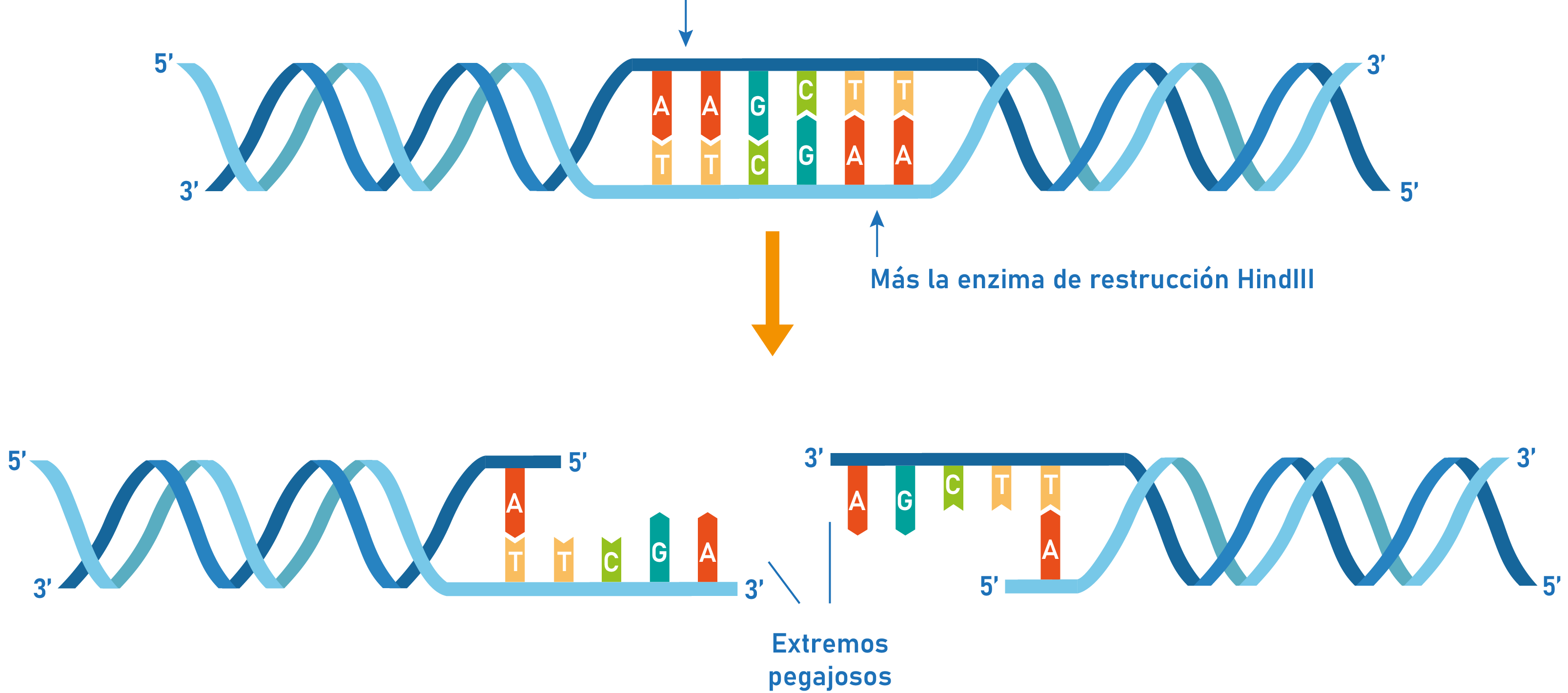PROCESSES OF RECOMBINANT DNA TECHNOLOGY
Recombinant DNA Technology: Step-by-Step Overview
Recombinant DNA technology involves a series of systematic steps for genetic manipulation and protein production.
Isolation of Genetic Material (DNA):
- DNA, the genetic material, needs to be in pure form for manipulation.
- Cell membranes are broken to release DNA along with other macromolecules.
- Enzymes like lysozyme, cellulase, or chitinase used for cell lysis.
- DNA purification involves removal of RNA, proteins, and other contaminants.
- Purified DNA precipitates with chilled ethanol.
Cutting DNA at Specific Locations:
- Restriction enzyme digestion performed on purified DNA.
- Agarose gel electrophoresis checks digestion progress.
- Vector DNA also subjected to the same process.
Joining of DNA (Ligation):
- Gene of interest from source DNA and cut vector mixed.
- Ligase added to facilitate the joining process.
- Resulting in the formation of recombinant DNA.
Amplification of Gene using PCR:
- Polymerase Chain Reaction (PCR) for synthesizing multiple copies of the gene.
- Two sets of primers and DNA polymerase used for in vitro amplification.
- Billion-fold amplification achieved using a thermostable DNA polymerase.
Insertion of Recombinant DNA into Host:
- Ligated DNA introduced into competent recipient cells.
- Cells take up recombinant DNA.
- Selection based on antibiotic resistance genes.
- Transformed cells identified and cultured.
Obtaining the Foreign Gene Product:
- Expression of foreign genes under suitable conditions.
- Recombinant DNA multiplied within host cells.
- Aim is to produce a desirable protein.
- Large-scale production achieved using bioreactors.
Bioreactors for Large-Scale Production:
- Vessels facilitating biological conversion of raw materials into products.
- Stirred-tank reactors or alternative systems for optimum growth conditions.
- Agitator system, oxygen delivery, foam control, temperature, and pH control systems present.
Downstream Processing:
- After biosynthetic stage, product undergoes downstream processing.
- Separation and purification processes.
- Formulation with preservatives.
- Clinical trials and quality control testing.
Final Product Preparation:
- Product ready for marketing after downstream processing.
- Quality control ensures product efficacy and safety.
- Formulation and testing vary based on the specific product.
Amplification of Gene of Interest using PCR
Polymerase Chain Reaction (PCR) is a powerful technique for in vitro amplification of specific DNA segments.
Principle:
- PCR replicates a targeted DNA segment using DNA polymerase enzyme.
- Utilizes synthetic oligonucleotide primers, DNA template, and nucleotides.
Procedure:
Denaturation (94-98°C):
- DNA template heated to separate double-stranded DNA.
- High temperature breaks hydrogen bonds, yielding single-stranded DNA.
Annealing (50-65°C):
- Reaction cooled to allow primers to bind to complementary sequences on single-stranded DNA.
- Temperature critical for primer specificity.
Extension (72°C):
- DNA polymerase synthesizes new DNA strands using primers.
- Reaction temperature optimized for enzyme activity.
Cycle Repetition:
- Repeated cycles (typically 20-40) of denaturation, annealing, and extension.
- Each cycle doubles the amount of target DNA.
Thermostable DNA Polymerase:
- Enzyme resistant to denaturation temperature.
- Taq polymerase, isolated from Thermus aquaticus bacterium, commonly used.
Application:
- Gene amplification for various purposes, including cloning, sequencing, and analysis.
- Diagnostic tool for detecting genetic diseases or pathogens.
Advantages:
- Rapid and efficient amplification.
- Minimal DNA requirement.
- Versatile application in molecular biology.
Limitations:
- Error-prone, may introduce mutations.
- Sensitivity to reaction conditions.
- Limited fragment size (<5 kb) in traditional PCR.
Variations:
- Reverse Transcription PCR (RT-PCR) amplifies RNA by first converting it into complementary DNA (cDNA).
- Quantitative PCR (qPCR) measures DNA concentration during amplification.
BIOREACTOR
| Bioreactor Type | Description | Functionality | Components |
|---|---|---|---|
| Simple Stirred-Tank Bioreactor | – Cylindrical or curved base. – Equipped with a stirrer/agitator. | – Even mixing of nutrients and oxygen. – Suitable for various cell cultures. | – Agitator system. – Temperature control. – Sampling ports. |
| Sparged Stirred-Tank Bioreactor | – Similar to a stirred-tank with additional features. – Sterile air bubbles sparged into the culture. | – Combines mechanical stirring with air sparging for improved oxygen transfer. – Suitable for aerobic cultures. | – Agitator system. – Air sparging system. – Temperature and pH control. – Foam control. |



